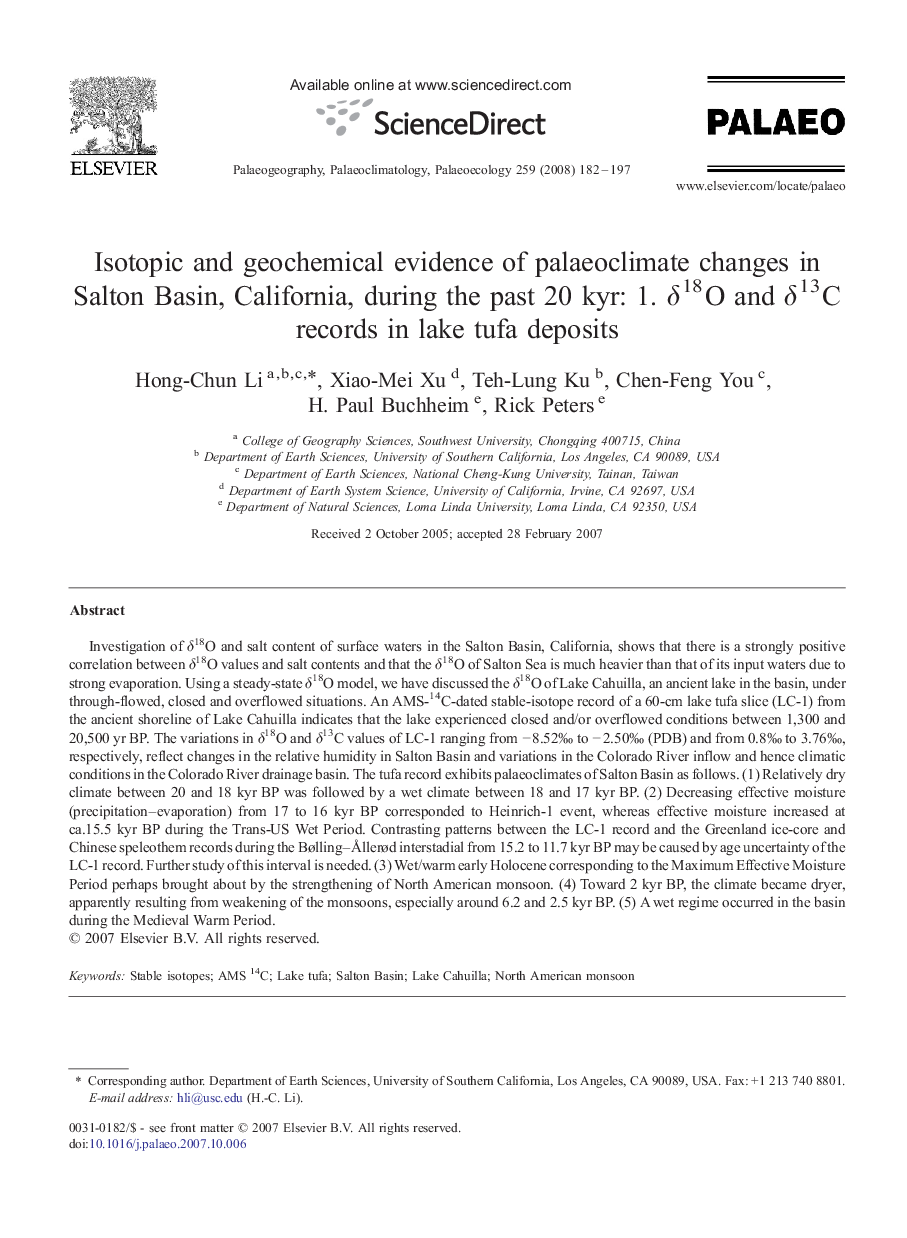| Article ID | Journal | Published Year | Pages | File Type |
|---|---|---|---|---|
| 4468646 | Palaeogeography, Palaeoclimatology, Palaeoecology | 2008 | 16 Pages |
Investigation of δ18O and salt content of surface waters in the Salton Basin, California, shows that there is a strongly positive correlation between δ18O values and salt contents and that the δ18O of Salton Sea is much heavier than that of its input waters due to strong evaporation. Using a steady-state δ18O model, we have discussed the δ18O of Lake Cahuilla, an ancient lake in the basin, under through-flowed, closed and overflowed situations. An AMS-14C-dated stable-isotope record of a 60-cm lake tufa slice (LC-1) from the ancient shoreline of Lake Cahuilla indicates that the lake experienced closed and/or overflowed conditions between 1,300 and 20,500 yr BP. The variations in δ18O and δ13C values of LC-1 ranging from − 8.52‰ to − 2.50‰ (PDB) and from 0.8‰ to 3.76‰, respectively, reflect changes in the relative humidity in Salton Basin and variations in the Colorado River inflow and hence climatic conditions in the Colorado River drainage basin. The tufa record exhibits palaeoclimates of Salton Basin as follows. (1) Relatively dry climate between 20 and 18 kyr BP was followed by a wet climate between 18 and 17 kyr BP. (2) Decreasing effective moisture (precipitation–evaporation) from 17 to 16 kyr BP corresponded to Heinrich-1 event, whereas effective moisture increased at ca.15.5 kyr BP during the Trans-US Wet Period. Contrasting patterns between the LC-1 record and the Greenland ice-core and Chinese speleothem records during the Bølling–Ållerød interstadial from 15.2 to 11.7 kyr BP may be caused by age uncertainty of the LC-1 record. Further study of this interval is needed. (3) Wet/warm early Holocene corresponding to the Maximum Effective Moisture Period perhaps brought about by the strengthening of North American monsoon. (4) Toward 2 kyr BP, the climate became dryer, apparently resulting from weakening of the monsoons, especially around 6.2 and 2.5 kyr BP. (5) A wet regime occurred in the basin during the Medieval Warm Period.
